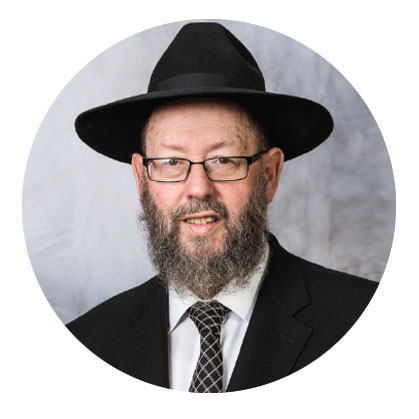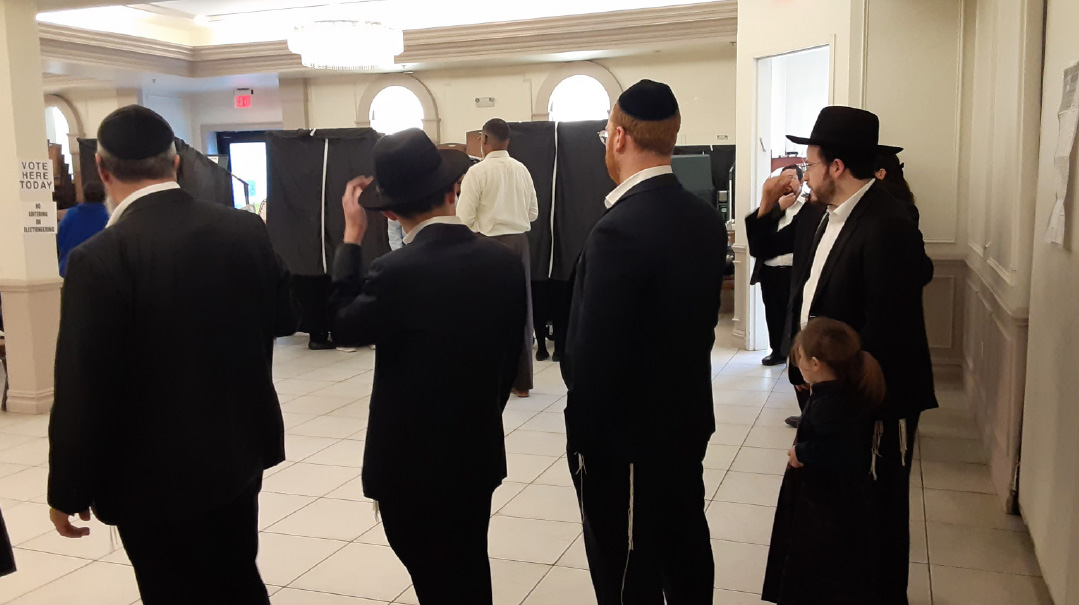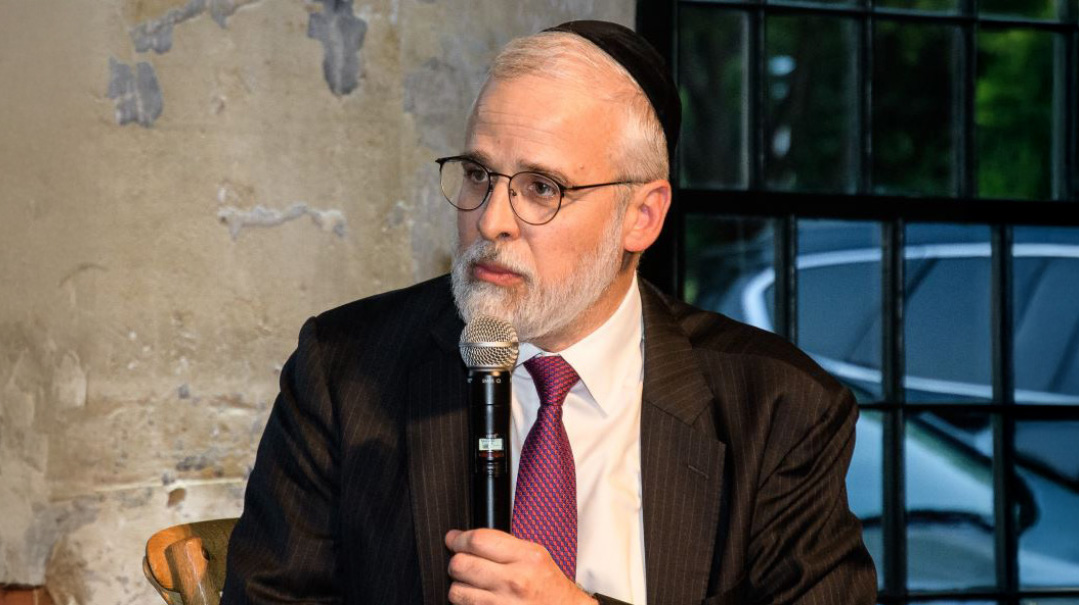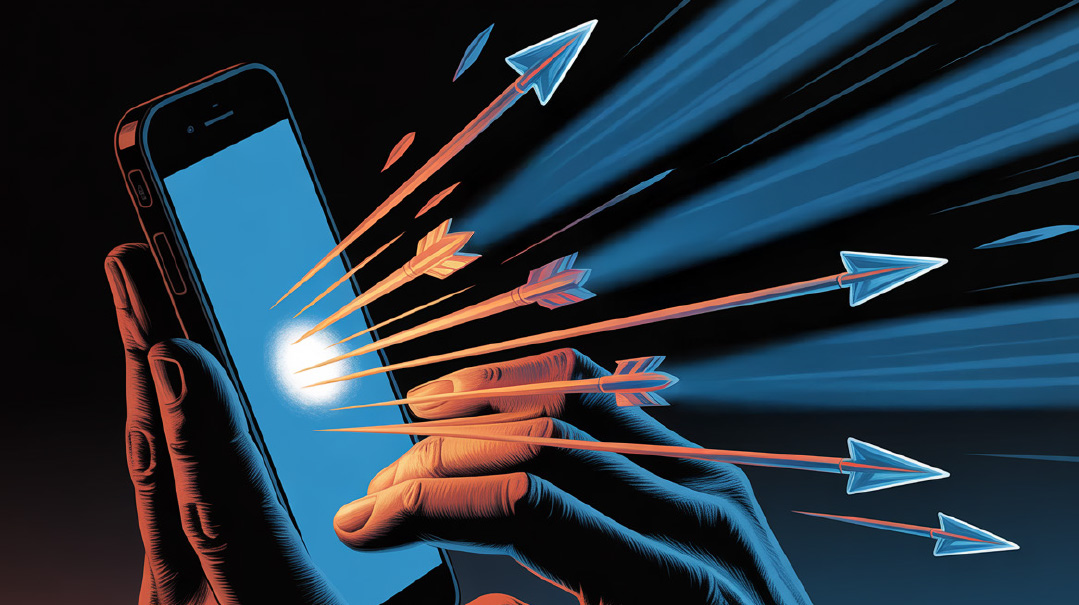Standing Up to the Task

If the Ribbono shel Olam has such faith in us, then we will rise to that level

IT is well known that prior to leaving Mitzrayim, the Jewish People were on the 49th level of tumah. Had they remained even a moment longer, they would have descended to the 50th level, which, we are taught, is the point of no return.
Their spiritual decline was so profound that, at the onset of Kri’as Yam Suf, the angels protested — “Halalu ovdei avodah zarah v’halalu ovdei avodah zarah — These [the Egyptians] are idolaters and these [the Jews] are idolaters.” Why should the Jews be saved over the Egyptians?
And yet just 50 days later, Klal Yisrael stood before Har Sinai, accepting the entirety of the Torah. It boggles the mind. Seven weeks? Is that all it took to emerge from the depths of the shaarei tumah to such spiritual eminence that they could absorb kol haTorah kulah?
Picture a group of recent baalei teshuvah arriving at a class given by a kiruv rabbi. The rabbi gets up and begins to share all of hilchos Shabbos, with every machlokes haposkim and each possible chumra. One might imagine that the group of listeners would be overwhelmed. And yet this is the very dynamic that transpired at Har Sinai. How do we understand this?
I believe this phenomenon can be explained in light of two different gemaras that, at first glance, appear to sharply contradict one another.
The first is in Masechta Yoma (18a) and it teaches something astonishing. In the days of the Second Beis Hamikdash, the position of Kohein Gadol was a political plum that the government would sell for an ample sum. The Gemara demonstrates this with the tale of Marta bas Baitus, a wealthy widow who was remarried to Yehoshua ben Gamla. Marta bas Baitus donated a tirkiva d’dinrei — a significant sum of money — to King Yanai in exchange for her husband’s appointment to the position of Kohein Gadol. (See the mishnah in Yevamos [61a], which rules that if one was married to a widow and then became a Kohein Gadol, he may remain married to her).
The Rishonim are bothered by a powerful question. This gemara makes it sound like Yehoshua ben Gamla was a fraud. He became the Kohein Gadol because his wife bought it for him.
But is this really the case? Was Yehoshua ben Gamla really such an unworthy individual?
The Rishonim quote the well-known gemara in Bava Basra (21a) that describes the launch of what we know today as the day school system. “Zachor oso ha’ish latov [May that man be remembered for the good],” says the Gemara, “v’Yehoshua ben Gamla shemo [and his name is Yehoshua ben Gamla].”
The Gemara goes on to recount how it was Yehoshua ben Gamla who instituted melamdei tinokos b’chol medinah u’medinah uv’chol ir va’ir — teachers of children in every province and every city. The Gemara deems this accomplishment so momentous that it comments that, if not for Yehoshua ben Gamla, Torah would have been forgotten in Yisrael.
The Rishonim’s question is essentially — will the real Yehoshua ben Gamla please stand up?
Could the man who wormed his way into the Kehunah Gedolah be the same one who singlehandedly salvaged the Torah from being forgotten in Yisrael?
Says the Sfas Emes, the two Yehoshua ben Gamlas are, in fact, one and the same. And though his entry into the Kehunah Gedolah may have come about through unscrupulous means, the move ultimately resulted in a metamorphosis of his entire persona.
Once he became the Kohein Gadol, people started treating him like a Kohein Gadol. They afforded him the kavod due to a Kohein Gadol. They asked him their sh’eilos. They davened on his behalf.
And as a result, he became a different person. Because people respond to the way that others treat them.
Yehoshua ben Gamla became not only a true Kohein Gadol, but a true adam gadol.
With this yesod, we can begin to answer our original question. We asked how it could be that Hashem expected these former idol-worshipping slaves to observe 613 mitzvos, with all their various intricacies.
I believe the secret lies in a single pasuk. Just prior to Matan Torah, Hashem instructs Moshe to share a message with the Jewish People: “V’atem tiheyu mamleches kohanim v’goy kadosh — And you shall be a kingdom of priests and a holy nation.”
When Klal Yisrael heard what Hashem thought of them, they transformed from ovdei avodah zarah to a goy kadosh.
Because if the Ribbono shel Olam has such faith in us, then we will rise to that level.
That was the necessary preamble to Kabbalas HaTorah.
That is how people react; this is human nature. We rise or fall to the level of faith that others have in us.
What is true for adults is certainly true for children. If there is one crucial lesson for all parents to know, it is this: Your children’s behavior will reflect how you treat them.
If we treat them like immature, incapable children, then that is what they will become.
But if we show how greatly we admire them, how strongly we believe in them, how much hope and aspiration we have for their futures, then they will live up to that expectation.
The distinction can be as subtle as an intonation. When a child misbehaves, a common response is “How could you have done that?” This rhetorical question can have two opposite meanings, depending upon which word is emphasized.
“How could you have done that?” means — “You’re so special. You’re so wonderful. How could you have done something that is so beneath you?”
But the other way it can be said is “How could you have done that?” What the child then hears is, “Have you sunk so low? Are you at the point where you’d actually do that?”
We were capable of accepting the Torah because of a transformation in our own self-image. In attempting to transmit the Torah to a future generation, we must ensure that they see themselves as the mamleches kohanim that Hashem sees in us.
There is another lesson to be learned from the gemara about Yehoshua ben Gamla. Before describing the system that Yehoshua ben Gamla instituted, the Gemara explains that there was a point in time when Torah was taught exclusively by fathers to their children; those orphaned from their fathers would not learn at all.
This system was revamped somewhat but saw little success. The idea of hired educators was introduced, but only for teenage students. Should the rebbi discipline a student, he’d pick up and leave. Overall, the situation was dire.
Children weren’t being taught.
Their lives were being wasted.
There was a crisis brewing in Klal Yisrael.
Given the gravity of the situation, isn’t it strange that there was only one man who sprang into action? Shouldn’t there have been a mass uprising? Shouldn’t there have been thousands taking to the streets demanding change?
But there weren’t. “Zachor oso ha’ish latov,” was the expression of the Gemara, “may that man be remembered for the good.” It was just one man — Yehoshua ben Gamla. One man and no one else.
And that’s an important message for us all. There will be many times in life when we are faced with such opportunities. There will be problems that desperately need solutions. We can shrug our shoulders and hope that somehow, something will happen. Or we can be the Yehoshua ben Gamla. And we too can merit the tribute of Chazal, “Zachor oso ha’ish latov — may this man be remembered for the good.”
This lesson is central to the story of Rus that we will read on Shavuos. In Megillas Rus, we learn that the opportunity to perform yibum with Rus was offered to her late husband’s closest relative, referred to in the pasuk as “Ploni Almoni.” For lack of a better translation, “Ploni Almoni” means “Mr. X.” Mr. Nobody. This Ploni Almoni turned down the offer, and it was Boaz who would take Rus as a wife. The rest is evolving history.
But it happens to be that this Mr. X had a name. Midrash Lekach Tov tells us that his name was Tov. The relative who refused was named Tov. So why doesn’t the Torah tell us this? Why is he given the anonymous label of Ploni Almoni?
The Torah is revealing a crucial lesson.
People who do not seize the opportunity are doomed to fade into obscurity.
Boaz met the challenge he was faced with and stood up to the task. He will forever be remembered as the progenitor of Mashiach.
Ploni Almoni’s name evaporates from the pages of history. He is forever remembered as Anonymous.
Each of us, during the course of our lives, is given opportunities to make a difference. The choice we make will determine if we shall be remembered for posterity as a Boaz or Yehoshua ben Gamla.
Or be forgotten like Ploni Almoni.
The decision is ours.
Rabbi Yissocher Frand is a rosh yeshivah at Yeshivas Ner Yisroel of Baltimore. He is the author of ten books published by ArtScroll and has recently published a Hebrew sefer titled Haparshah B’halachah on Sefer Bereishis and Shemos, with the second chelek on Vayikra, Bamidbar, and Devarim due out in the next several weeks.
(Originally featured in Mishpacha, Issue 1015)
Oops! We could not locate your form.







